10 Common Witchcraft Symbols
- Laura Wash
- May 21
- 9 min read
Witchcraft has long been an integral part of many cultures, filled with rich symbols that convey deep meanings and serve various purposes. From protection spells to representations of the divine, these symbols reflect ancient beliefs and the interconnectedness of life. This blog post will explore ten common witchcraft symbols, diving into their significance, uses, and origins, helping you gain a clearer insight into their roles in both witchcraft and spirituality.
Pentagram
The pentagram is arguably the most recognizable symbol in witchcraft. This five-pointed star, often surrounded by a circle, represents the five elements: earth, air, fire, water, and spirit. Each point corresponds to one of these elements, emphasizing balance and harmony.
Its roots go back to ancient Babylon, appearing in various cultures as a symbol of unity and natural forces.
Uses of the Pentagram
The pentagram is utilized in various contexts, including:
Protection: The pentagram is commonly used as a protective symbol against negative energies and entities.
Rituals: It serves as a focal point in rituals and ceremonies, helping to create sacred space.
Correspondences of the Pentagram
The pentagram is rich in symbolism and correspondences:
Earth: Stability, grounding, and material aspects.
Air: Intellect, communication, and inspiration.
Fire: Passion, energy, and transformation.
Water: Emotions, intuition, and healing.
Spirit: The connection to the divine and the higher self.
Associated Deities
Various gods and goddesses are linked to the pentagram and its correspondences, reflecting their attributes and domains:
Hecate: Goddess of magic, witchcraft, and the moon, often associated with the pentagram in her role as a guide through transitions.
Venus: Linked to love, beauty, and harmony; the pentagram is sometimes associated with her as a symbol of balance.
Pan: The god of nature, often connected to the earth and the wild, embodying the spirit of the pentagram.
Thoth: Egyptian god of wisdom and writing, associated with knowledge and the intellect represented by the pentagram.
The pentagram serves as a powerful symbol in spiritual practices, embodying various correspondences and associations with deities. Understanding its uses and meanings can enhance one's spiritual journey and connection to the energies it represents.
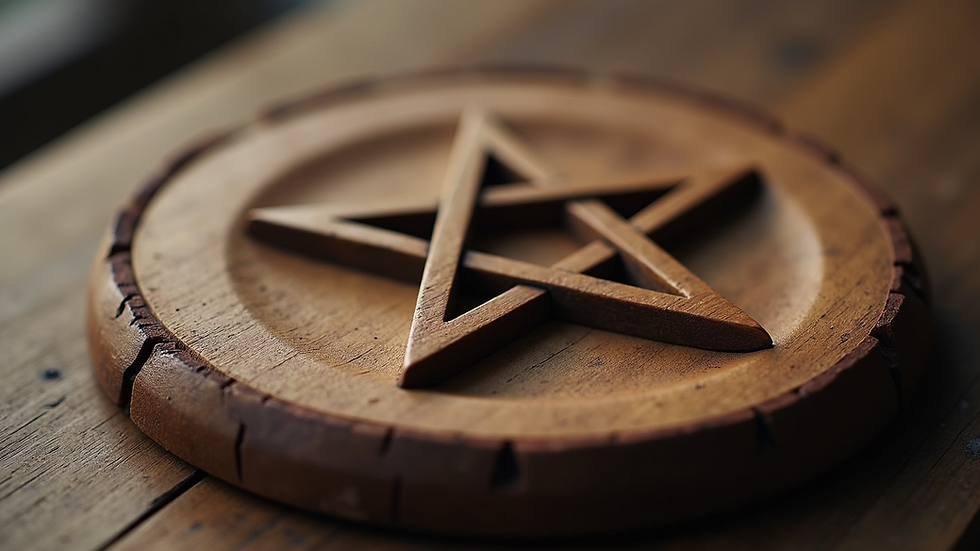
Witches' Knots
Witches' knots, often called the "Celtic Knot," are symbolic knots that are often used in various forms of magical practices and rituals, interconnectedness and the cycles of existence. They are believed to hold specific energies and intentions, serving as a tool for manifestation, protection, or binding.
Uses of Witches' Knots
Protection: Knots can be tied to create protective barriers against negative energies.
Manifestation: They can be used to focus intentions on a specific goal or desire.
Binding: Knots can symbolize binding someone or something, often used in love or banishing spells.
Healing: Certain knots are used in healing rituals to channel energy.
Correspondences
Witches' knots can correspond to various elements and energies, depending on their specific use:
Element of Water: Often associated with emotions and intuition.
Element of Earth: Tied to grounding and stability.
Element of Fire: Represents transformation and passion.
Element of Air: Linked to communication and intellect.
Associated Deities
Different gods and goddesses may be associated with witches' knots based on their attributes:
Hecate: Goddess of magic, witchcraft, and the night, often invoked in binding spells.
Brigid: Goddess of healing and protection, associated with knots used for these purposes.
Ostara: Goddess of spring and renewal, whose energy may be channeled in manifestation knots.
Kali: Hindu goddess associated with transformation and empowerment, relevant in binding knots.
Witches' knots serve as powerful symbols, used in talismans throughout Celtic traditions. in magical practices, allowing us to focus their intentions and energies in various ways. These knots are believed to shield against negative energy.
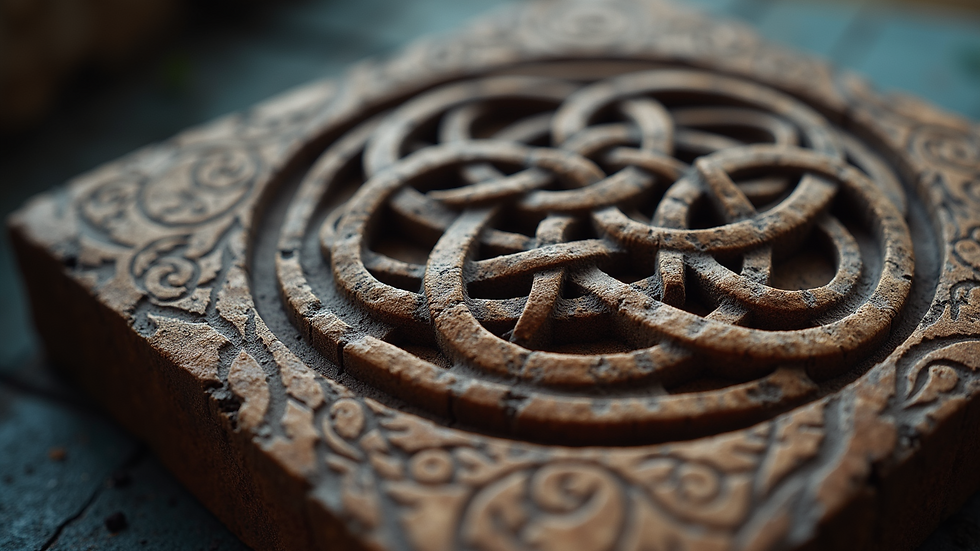
Triple Moon
The Triple Moon symbol illustrates the moon's three phases: waxing, full, and waning. It symbolizes the triple goddess—maiden, mother, and crone—reflecting different stages of a woman's life and the natural cycles.
Symbolism
The Triple Moon embodies various themes:
Feminine Power: Represents the strength and wisdom of the feminine divine.
Intuition: Connects to inner wisdom and spiritual insight.
Life Cycles: Reflects the natural cycles of birth, growth, and transformation.
Corresponding Gods and Goddesses
Several deities are associated with the Triple Moon, including:
Selene: The Greek goddess of the moon.
Luna: The Roman goddess of the moon.
Artemis: The Greek goddess of the hunt, often associated with the moon.
Hecate: The Greek goddess of magic and witchcraft, linked to the waning moon.
Common Uses
The Triple Moon symbol is commonly used in:
Jewelry: Often worn as a representation of the divine feminine.
Altars: Incorporated in spiritual practices and rituals.
Tattoos: Chosen for personal significance and connection to lunar energies.
Origins
The origins of the Triple Moon can be traced back to ancient Greek and Roman cultures, where moon deities played a significant role in religious practices and beliefs. The symbol has since been embraced by modern paganism and Wicca, where it represents the divine feminine and the cycles of nature.

Ankh
What is an Ankh?
The ankh is a famous ancient Egyptian emblem that resembles a cross with a loop at the top. It has been widely recognized as a symbol of life and immortality.
Symbolism of the Ankh
The ankh symbolizes:
Life
Immortality
Balance
Correspondence with Gods and Goddesses
The ankh is closely associated with several deities in ancient Egyptian mythology, including:
Osiris - the god of the afterlife and resurrection
Isis - the goddess of magic and motherhood
Horus - the sky god, often depicted with an ankh
Common Uses of the Ankh
In modern practices, particularly in witchcraft, the ankh is commonly used for:
Rituals focused on rebirth and transformation
Gaining wisdom and spiritual development
Harnessing transformative energies in spells
Origin of the Ankh
The ankh has a history spanning over 5,000 years, with its origins rooted in ancient Egypt. It has been discovered in various forms of Egyptian art, emphasizing its link to the gods and representing the eternal nature of the soul.
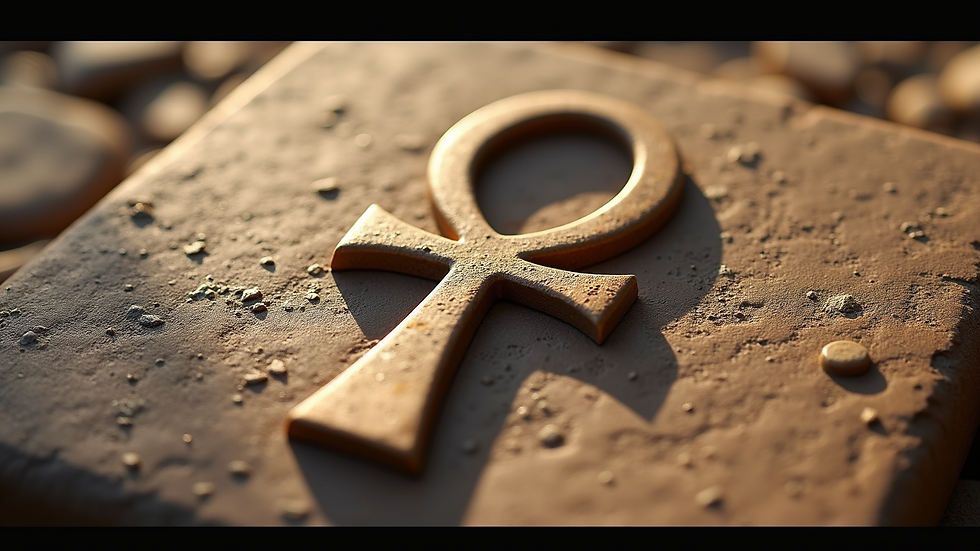
Triskelion
What is a Triskelion?
The triskelion, also known as the triple spiral, is a symbol consisting of three interlocked spirals or three bent human legs. It represents the concept of movement and the interconnectedness of life.
Symbolism
Each of the spirals in the triskelion signifies a distinct phase:
Life
Death
Rebirth
This symbol embodies the natural cycles of existence and personal growth.
Corresponding Gods and Goddesses
The triskelion is associated with various deities in Celtic mythology, including:
Danu - The mother goddess associated with fertility and the earth.
Brigid - The goddess of healing, poetry, and fertility.
Lugh - The god of light, skill, and crafts.
Common Uses
Today, the triskelion is commonly used in various practices, including:
Wicca and other pagan traditions
Personal growth and self-discovery
Art and jewelry design
Origin
The triskelion originated from Celtic culture and is frequently found etched into ancient stone monuments, such as the Newgrange passage tomb in Ireland. Its enduring presence in modern spiritual practices highlights its deep-rooted significance in understanding life’s cyclical nature.
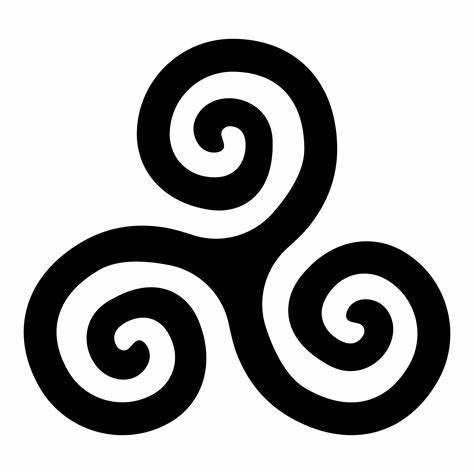
Hecate Wheel
What is a Hecate Wheel?
The Hecate Wheel, also known as the Wheel of Hecate or Hecate's Wheel, is a symbol associated with the goddess Hecate in ancient mythology. It typically consists of a circular design that may include various symbols, such as keys, torches, and other elements related to Hecate's attributes and powers.
What Does it Symbolize?
The Hecate Wheel symbolizes various concepts, including:
Triple Goddess: It represents the three aspects of Hecate: Maiden, Mother, and Crone, which correspond to the phases of the moon.
Protection: The wheel is often seen as a protective symbol, warding off negative energies and providing guidance.
Transformation: It signifies the cycles of life, death, and rebirth, reflecting the transformative power of Hecate.
Corresponding Gods and Goddesses
In addition to Hecate, the Hecate Wheel may correspond with other deities, such as:
Selene: The moon goddess, often associated with the lunar aspects of Hecate.
Persephone: The goddess of spring and queen of the underworld, linked to themes of life and death.
Artemis: The goddess of the hunt and wilderness, who shares some characteristics with Hecate.
Common Uses
The Hecate Wheel is commonly used for:
Rituals: It is often incorporated into rituals for protection, guidance, and transformation.
Meditation: Practitioners may meditate on the wheel to connect with Hecate's energy and wisdom.
Spellwork: The wheel can be used in spells related to protection, intuition, and the cycles of life.
Origin
The Hecate Wheel has its origins in ancient Greek mythology, where Hecate was worshipped as a powerful goddess of magic, witchcraft, and the moon. Her symbolism evolved over time, and the wheel itself became a representation of her multifaceted nature and her role as a guide through the mysteries of life and death.
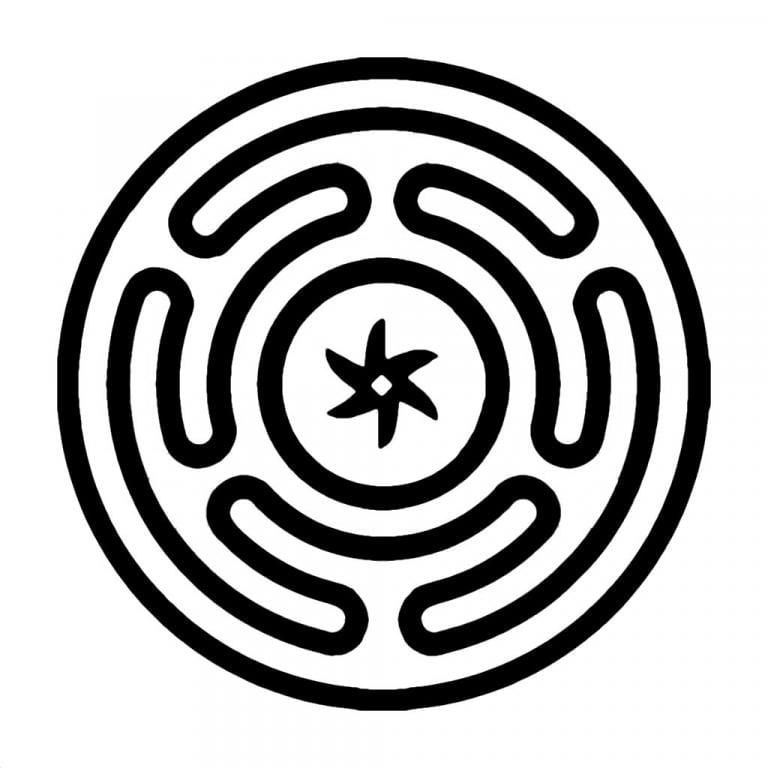
Spiral Goddess
What is a Spiral Goddess?
A Spiral Goddess is a representation of feminine divinity associated with the spiral symbol. This concept embodies the ideas of growth, transformation, and the cyclical nature of life, often reflecting the nurturing aspects of femininity and the connection to the Earth and the cosmos.
Symbolism of the Spiral Goddess
The Spiral Goddess symbolizes various important themes, including:
Feminine power and creativity
The cycles of life, death, and rebirth
Connection to nature and the universe
Intuition and inner wisdom
Correspondence with Gods and Goddesses
The Spiral Goddess is often associated with various deities across different cultures, such as:
Kali - Represents the transformative power of destruction and creation.
Gaia - Symbolizes the Earth and the interconnectedness of all life.
Brigid - Associated with healing, fertility, and the renewal of life.
Isis - Represents magic, motherhood, and the cycle of life.
Common Uses of the Spiral Goddess Symbol
The Spiral Goddess symbol is commonly used for:
Spiritual rituals and ceremonies celebrating femininity
Artistic expressions that explore themes of growth and transformation
Creating talismans or amulets for protection and empowerment
Guided meditations focused on embracing one's inner goddess
Origin of the Spiral Goddess Concept
The concept of the Spiral Goddess has ancient origins, with representations found in various cultures, including:
Neolithic goddess figurines
Celtic mythology and art
Indigenous spiritual practices
Ancient Egyptian worship of goddesses like Isis
These diverse representations emphasize the universal themes of the feminine divine and the cyclical nature of existence, highlighting the enduring connection between women and the natural world.

Horned God
What is the Horned God?
The Horned God, characterized by antlers, embodies the masculine side of nature's divine essence. This figure is strongly associated with fertility, the wilderness, and the cycle of life.
Symbolism
The Horned God symbolizes various aspects of nature, particularly:
Fertility
Wildness and untamed nature
The life-death-rebirth cycle
Masculine energy and strength
Corresponding Gods and Goddesses
Several deities are associated with the Horned God across different cultures:
Cernunnos: The Celtic god of fertility and animals.
Pachamama: In Andean traditions, often depicted with horn-like features.
Pan: The Greek god of the wild, shepherds, and flocks.
Herne the Hunter: A figure from English folklore associated with the forest and hunting.
Common Uses
The Horned God is commonly invoked in various practices, including:
Rituals for fertility and abundance
Nature-based spiritual practices
Celebrations of seasonal changes, particularly during Beltane and Samhain
Connecting with the earth and its energies in witchcraft
Origin
The roots of the Horned God can be traced back to ancient pagan traditions that honored nature. This archetype has been recognized in various cultures throughout history.
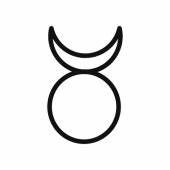
Triquetra
What is a Triquetra?
The triquetra, often referred to as the Celtic knot, is a symbol made up of three interconnected arcs. It is characterized by its continuous lines that create a triangular shape, and it is commonly associated with various meanings and representations.
Symbolism of the Triquetra
The triquetra symbolizes the unity of three elements. These elements can vary depending on the context but often include:
Mind, Body, and Spirit
Land, Sea, and Sky
Past, Present, and Future
Correspondence with Gods and Goddesses
The triquetra is associated with several deities in various traditions, particularly in Celtic mythology. Some of the key figures include:
Danu - The mother goddess of the Tuatha Dé Danann, representing fertility and the earth.
Brigid - The goddess of fire, poetry, and healing, symbolizing the creative force.
The Triple Goddess - Often represented as the Maiden, Mother, and Crone, embodying the life cycle.
Common Uses of the Triquetra
The triquetra is commonly used in various contexts, including:
Jewelry and personal adornments
Tattoos as a symbol of protection and interconnectedness
Art and decoration in homes and spiritual spaces
Witchcraft and pagan practices as a protective emblem
Origin of the Triquetra
The triquetra has its origins in ancient Celtic art and spiritual traditions. It has been found in various artifacts, manuscripts, and stone carvings across Europe, particularly in Ireland and Scotland. The symbol has evolved over time and continues to hold significant meaning in modern spiritual practices and interpretations.

Solar Cross
What is a Solar Cross?
The solar cross, characterized by a circle intersected by a cross, symbolizes the sun and the seasonal cycle. It embodies balance, life cycles, and the passage of time.
Symbolism
The solar cross represents:
The sun and its life-giving properties
The cyclical nature of seasons
Balance between different elements of nature
Correspondence with Gods and Goddesses
Various deities associated with the solar cross include:
Ra - Egyptian sun god
Helios - Greek sun god
Inti - Incan sun god
Surya - Hindu sun god
Sol - Roman sun god
Common Uses
In witchcraft and pagan practices, the solar cross is commonly used to:
Honor natural rhythms
Mark the changing seasons
Represent the balance between light and dark
Origin
The solar cross has roots in ancient sun worship and has held significant importance across various cultures throughout history. Its design can be traced back to prehistoric times, with representations found in various ancient artifacts and symbols across different civilizations.
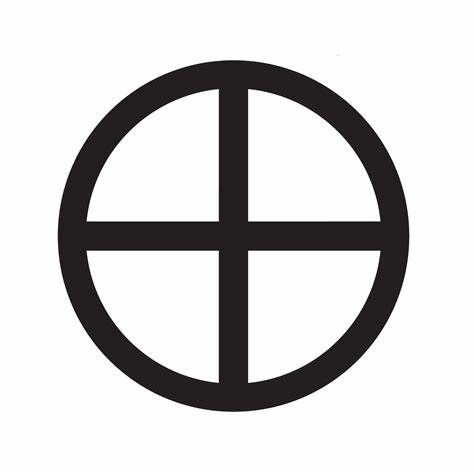
Embracing the Wisdom of Symbols
Understanding these symbols deepens our connection to witchcraft and the natural world. Each one is rich with history and meaning, serving as vital tools for both practice and reflection. By embracing these witchcraft symbols, practitioners can foster a deeper appreciation for the traditions shaping their spiritual journeys.
Incorporating them into rituals, meditations, or as artistic expressions allows individuals to harness the energies these symbols represent. In a world increasingly disconnected from nature, these symbols invite us to reconnect with life's mysteries, promoting a continuous journey of exploration and transformation.





Comments